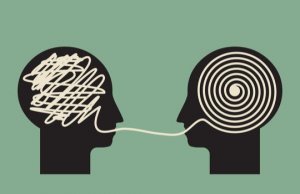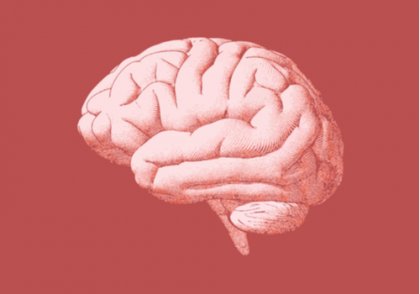The Psychology of Language


Written and verified by the psychologist María Alejandra Castro Arbeláez
How often do you stop and think about how important communication? When language fails, it affects you on a cognitive, emotional, and behavioral level. That’s why many different disciplines study language and seek to understand it better. One of those disciplines is the psychology of language or psycholinguistics.
In this article, we’re going to explore the field of psycholinguistics. We’ll discuss how it’s different from other branches of psychology, what it studies, and what psycholinguistic abilities are.
“Communication leads to community, that is, to understanding, intimacy, and mutual valuing.”
-Rollo May-
What’s the Psychology of Language?
First of all, it’s important to clarify that psycholinguistics draw from two specific disciplines: psychology and linguistics. The first studies human thoughts, emotions, and behavior and the second studies language and its manifestations.
Both of these fields come together to study the human language. However, psycholinguistics isn’t just the sum of its parts. Instead, it draws on theories and approaches from both fields and also studies new things.
Jacob Robert Kantor is the father of psycholinguistics. He was the first to use the term in his book An Objective Psychology of Grammar. However, scientists started to use the term more frequently after author NH Pronko published his article “Language and Psycholinguistics: A Review”.
Psycholinguistics is a science that studies how humans acquire, understand, and produce language. It also studies illnesses or problems related to language and emphasizes the cognitive mechanisms that intervene when the brain processes linguistic information.
Psycholinguistics studies both the psychological and neurological factors that influence language. It’s a theoretical and experimental science.

How Does Psycholinguistics Differ from Other Disciplines?
The psychology of language is different from other disciplines in the way it approaches language. In a nutshell, the psycholinguistics approach consists of:
- Studying how language is used. Psycholinguistics focuses on the use of knowledge and the psychological processes involved in it.
- Action. Psycholinguistics evaluates the set of procedures by which knowledge is applied to the production and comprehension of linguistic expressions.
- Action processes. It also focuses on those that put linguistic instinct into action.
Although other disciplines study language, they do so from a different perspective. Sociolinguistics, for example, studies the relationship between sociocultural and linguistic phenomena. Linguistics itself studies the origin, evolution, and structure of language.
It’s easy to confuse linguistics with psycholinguistics. Xavier Frías Conde makes the differences easy to understand in his article “Introduction to Psycholinguistics”. Here’s a non-exhaustive list of the differences:
- Comprehension. In linguistics, the smallest acoustic unit is the phoneme. In psycholinguistics, it’s the syllable.
- Production. In linguistics, the subject of study is the ideal native speaker. In psycholinguistics, on the other hand, the subject is the real speaker.
- Object of study. In terms of language use, linguistics seeks the most elegant, formal, and abstract language use. Psycholinguistics studies operational principles.
Now that you know the basics, you might be wondering how researchers carry out a psycholinguistic study. In general, they use a two-pronged approach:
- Observational. Researchers draw from linguistic behavioral tests. They also collect data in relevant everyday situations.
- Experimental. Using the scientific method, psycholinguistic researchers also carry out lab experiments.
Psycholinguistics, like most second-generation disciplines, follows a careful methodology. Consequently, experiments in this field tend to be noticeably well-designed and executed. Psycholinguistic research is also constantly generating new questions, prompting further study. It’s a very active discipline.

Psycholinguistic Abilities
Psycholinguistic abilities are essential for human communication because they’re the ones people use to communicate. They are:
- Language
- Thoughts
- Writing
- Auditory comprehension
- Sequential auditory memory
- Visual comprehension
- Visual association
- Verbal expression
- Motor expression
- Visual integration
- Auditory integration
- Visual-motor sequential memory
To evaluate these psycholinguistic skills, scientists rely on the paradigm of cognitive psychology research, which is based on mentalist, functionalist, computational, and restrictive theories.
In summary, psycholinguistics is a contemporary discipline. Thanks to this discipline, we’re slowly getting closer to fully understanding the complexity of human language. Every day, we understand more and more about how humans produce, codify, and use language as a communication tool.
How often do you stop and think about how important communication? When language fails, it affects you on a cognitive, emotional, and behavioral level. That’s why many different disciplines study language and seek to understand it better. One of those disciplines is the psychology of language or psycholinguistics.
In this article, we’re going to explore the field of psycholinguistics. We’ll discuss how it’s different from other branches of psychology, what it studies, and what psycholinguistic abilities are.
“Communication leads to community, that is, to understanding, intimacy, and mutual valuing.”
-Rollo May-
What’s the Psychology of Language?
First of all, it’s important to clarify that psycholinguistics draw from two specific disciplines: psychology and linguistics. The first studies human thoughts, emotions, and behavior and the second studies language and its manifestations.
Both of these fields come together to study the human language. However, psycholinguistics isn’t just the sum of its parts. Instead, it draws on theories and approaches from both fields and also studies new things.
Jacob Robert Kantor is the father of psycholinguistics. He was the first to use the term in his book An Objective Psychology of Grammar. However, scientists started to use the term more frequently after author NH Pronko published his article “Language and Psycholinguistics: A Review”.
Psycholinguistics is a science that studies how humans acquire, understand, and produce language. It also studies illnesses or problems related to language and emphasizes the cognitive mechanisms that intervene when the brain processes linguistic information.
Psycholinguistics studies both the psychological and neurological factors that influence language. It’s a theoretical and experimental science.

How Does Psycholinguistics Differ from Other Disciplines?
The psychology of language is different from other disciplines in the way it approaches language. In a nutshell, the psycholinguistics approach consists of:
- Studying how language is used. Psycholinguistics focuses on the use of knowledge and the psychological processes involved in it.
- Action. Psycholinguistics evaluates the set of procedures by which knowledge is applied to the production and comprehension of linguistic expressions.
- Action processes. It also focuses on those that put linguistic instinct into action.
Although other disciplines study language, they do so from a different perspective. Sociolinguistics, for example, studies the relationship between sociocultural and linguistic phenomena. Linguistics itself studies the origin, evolution, and structure of language.
It’s easy to confuse linguistics with psycholinguistics. Xavier Frías Conde makes the differences easy to understand in his article “Introduction to Psycholinguistics”. Here’s a non-exhaustive list of the differences:
- Comprehension. In linguistics, the smallest acoustic unit is the phoneme. In psycholinguistics, it’s the syllable.
- Production. In linguistics, the subject of study is the ideal native speaker. In psycholinguistics, on the other hand, the subject is the real speaker.
- Object of study. In terms of language use, linguistics seeks the most elegant, formal, and abstract language use. Psycholinguistics studies operational principles.
Now that you know the basics, you might be wondering how researchers carry out a psycholinguistic study. In general, they use a two-pronged approach:
- Observational. Researchers draw from linguistic behavioral tests. They also collect data in relevant everyday situations.
- Experimental. Using the scientific method, psycholinguistic researchers also carry out lab experiments.
Psycholinguistics, like most second-generation disciplines, follows a careful methodology. Consequently, experiments in this field tend to be noticeably well-designed and executed. Psycholinguistic research is also constantly generating new questions, prompting further study. It’s a very active discipline.

Psycholinguistic Abilities
Psycholinguistic abilities are essential for human communication because they’re the ones people use to communicate. They are:
- Language
- Thoughts
- Writing
- Auditory comprehension
- Sequential auditory memory
- Visual comprehension
- Visual association
- Verbal expression
- Motor expression
- Visual integration
- Auditory integration
- Visual-motor sequential memory
To evaluate these psycholinguistic skills, scientists rely on the paradigm of cognitive psychology research, which is based on mentalist, functionalist, computational, and restrictive theories.
In summary, psycholinguistics is a contemporary discipline. Thanks to this discipline, we’re slowly getting closer to fully understanding the complexity of human language. Every day, we understand more and more about how humans produce, codify, and use language as a communication tool.
All cited sources were thoroughly reviewed by our team to ensure their quality, reliability, currency, and validity. The bibliography of this article was considered reliable and of academic or scientific accuracy.
- Zanón, J, (2007). Psicolingüística y didáctica de las lenguas: una aproximación histórica conceptual. REvista de didáctica español lengua extranjera, (5), 1-30.
- Frías Conde, X. (2002). Introducción a la psicolingüística. Revista Phiologica Romanica.
This text is provided for informational purposes only and does not replace consultation with a professional. If in doubt, consult your specialist.







